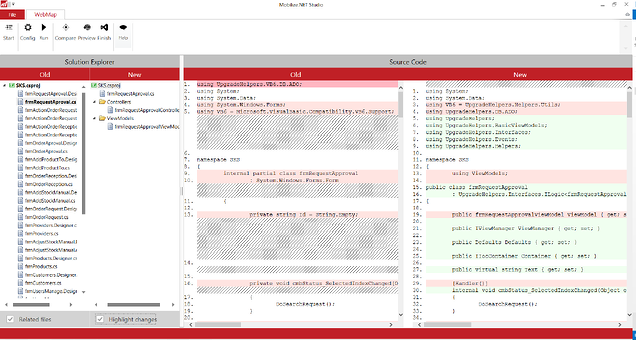WebMAP: Getting light with no rewrite
by DeeDee Walsh, on Apr 3, 2014 9:35:00 AM
First of all, this is not about Windows XP.
That said, Windows XP is the 2nd most popular operating system in the world after Windows 7. So far, Windows 8 hasn't made much of a dent in those numbers. Literally millions of computers are still running XP, and personal experience and common sense tells me that lots of those are still in the enterprise, running captive client-server line-of-business applications of great and continuing value to those enterprises.
This is a problem for Microsoft on many fronts. First and foremost, the much-delayed and long announced end of support for XP finally arrives next week on April 8. Sure, people have been upgrading to get off this looming train wreck (if you don't think unsupported/unpatched XP will pose a security risk starting on April 9 I have a bridge I would like to sell you). But not enough--setting aside little old ladies and home PCs why hasn't the enterprise cast those desktops into recycling and replaced them with something more modern and reliable?
The answer, of course, aside from sloth and greed, is that they have critical apps that won't run on Windows 7 or 8. They won't run because they were written in VB6 (or something even older) and they rely on 16-bit components, or 3rd party components from companies that don't exist anymore.
So they're stuck: they can't run the apps on a modern OS and they're reluctant to launch a rewrite to replace them. Rewrites, we all know, are expensive, frequently fail, and are almost always late.
Today at Build 2014---Microsoft's once-a-year conference for hard-core developers--Technical Fellow John Shewchuk and Corporate VP Steve Guggenheimer demoed our latest offering: WebMAP2 in front of the reported 5000 attendees while streaming it to possibly thousands more who would have attended if the conference hadn't sold out within a couple of days.
WebMAP2 doesn't solve the XP problem directly per se; actually our Visual Basic Upgrade Companion has solved this problem for years now. VBUC, you'll recall, analyzes VB projects and then converts--migrates--them to .NET and C# (or VB.NET). The reason that's not a perfect answer for right-thinking CIOs to solve the XP migration problem is that today--as opposed to just a couple of years ago--.NET may not be enough anymore.
Over the last couple of years we've all seen a sea change in the world of computing devices as smartphones and tablets have eaten away at sales of laptop and desktop PCs; a world where email, apps, messages, and more are available anytime, anywhere, from a device that we carry in our pocket and is always on, always connected.
Our customers have wanted us to respond to that need and after a lot of developer sweat and blood we're happy to announce our newest solution, WebMAP2.
We think WebMAP2 is a breakthrough product because it solves two tough problems:
- Converts and transforms UI code from C#/Winforms to HTML5 with JavaScript (really TypeScript) and CSS.
- Re-architects your app into MVVM (Model View View-Model) pattern with synchronization via AJAX and JSON.
As anyone who's done it can tell you, creating a robust modern web application is non-trivial. There's a bunch of stuff you have to handle like persistence, synchronizaton, authentication, performance, and so on. We really believe the approach that WebMAP2 takes provides an outstanding result that works well on the client side as well as the back end (server).
A few miscellaneous points about what we do:
- We create a synchronization protocol using JSON and AJAX that optimizes for efficiency (sending just the data that's changed) while still being robust (we figure out when we need to refresh the entire view model).
- We let you choose whether you want the resulting app after transformation to be optimized for speed (more JavaScript on the client) or size (less JavaScript on the client but more server round trips).
- We create a services layer on the UI as a part of the MVVM re-architecture that can be used as a jumping off place to create a true SOA representation.
- We use TypeScript because, hey, it's better than JavaScript. Of course, the output of TS is JS.
- We abstract the database connections so it's trivial to host the database in a cloud infrastructure. In fact, we architect things so it's trivial to put the entire server side up in a private or public cloud.


